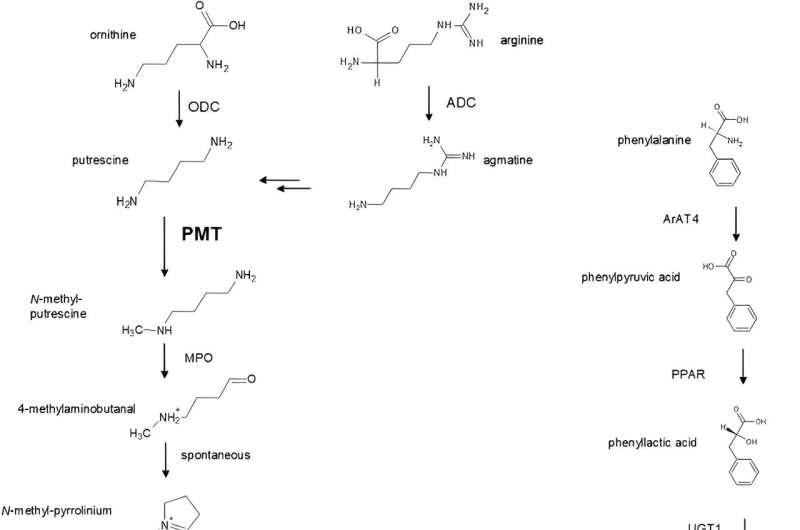This article has been reviewed according to Science X's editorial process and policies. Editors have highlighted the following attributes while ensuring the content's credibility:
fact-checked
peer-reviewed publication
trusted source
proofread
Identifying tropane alkaloid types in Hyoscyamus niger L.

Researchers conducted a study on tropane alkaloids (TAs), crucial natural compounds found abundantly in various plant families. TAs, often toxins, include major ones like L-hyoscyamine, atropine, and scopolamine, each with distinct pharmacological uses.
The focus of this study was on H. niger L., (henbane) a plant with pharmaceutical significance due to its production of hyoscyamine, scopolamine, and other TAs. The research is published in the Journal of the American Society for Horticultural Science.
The study aimed to increase scopolamine and hyoscyamine accumulation in H. niger through genetic analysis, breeding and selection. H. niger, native to Eurasia and globally distributed, has historical use in anesthesia and psychoactive applications. It remains relevant in folk medicine and pharmaceutical preparations.
The plant was chosen for the study due to its features like plant size, growth habit, short life cycle, and genetic material availability. H. niger is a monoecious plant suitable for genetic engineering.
The biosynthesis of TAs in H. niger involves intricate processes, including the catalytic activities of enzymes such as hyoscyamine 6β-hydroxylase (H6H) and putrescine N-methyltransferase (PMT). The study provides valuable insights into the specific pathways leading to the production of major TAs like hyoscyamine and scopolamine.
The research not only contributes to the understanding of TA biosynthesis but also holds promise for the pharmaceutical industry, where these compounds find applications in diagnostic and therapeutic drugs.
The comprehensive diagram included in the study illustrates the sequential steps involved in TA biosynthesis, showcasing the complexity of these natural compounds. As TAs have both toxic and pharmacological aspects, the findings open avenues for further exploration in drug development and plant engineering.
This research marks a significant step forward in unraveling the mysteries of tropane alkaloids, bringing us closer to harnessing the full potential of plants like H. niger for medicinal and industrial purposes.
Larry Kramer, a graduate student, is currently pursuing his Ph.D. The focus of his thesis work is on how tropane alkaloids are synthesized in Hyoscyamus niger. His long-term goal is to make Hyoscyamine through cell and tissue culture. Sastry Jayanty, a professor at Colorado State University, is his major advisor.
Dr. Jayanty is a postharvest physiologist, and his research focus is on potato postharvest and nutritional characteristics and assessment of processing quality attributes.
More information: Lawrence Kramer et al, Identification of Tropane Alkaloid Chemotypes and Genotypes in Hyoscyamus niger L., Journal of the American Society for Horticultural Science (2023). DOI: 10.21273/JASHS05309-23
Journal information: Journal of the American Society for Horticultural Science
Provided by American Society for Horticultural Science





















